3) What is the EVAP System?
What is the EVAP System? Are you curious about cars and how they work? Well, today, we're going to talk about something called the EVAP system. It might sound a bit tricky, but don't worry – we'll explain it in a way that's easy to understand the system and components.
What is the EVAP System?
The EVAP system stands for "Evaporative Emission Control System." It's like a superhero for cars emission control system because it helps keep the air clean and our environment healthy. Imagine if cars didn't have this system – the air would be full of yucky stuff and a haze of brown smoke!
Purpose of the EVAP System:
The main job of the EVAP system is to prevent gasoline vapors from escaping into the air. When your car's engine is running, gasoline can turn into vapor, and if it escapes, it can make the air dirty and smelly. But the EVAP system makes sure this doesn't happen.
EVAP System Components
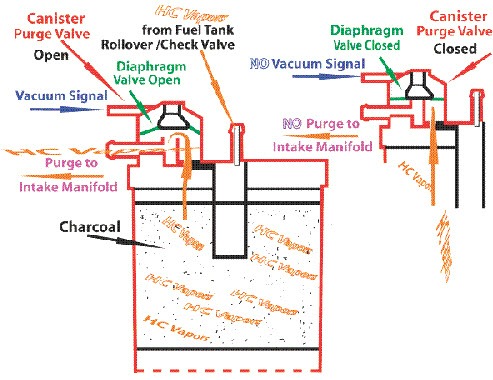
What is the EVAP System:
Now, let's talk about the parts that make up this Evap System:
- Gas Tank: This is where your car stores gasoline. The EVAP system starts here.
- Charcoal Canister: Think of this like a magic box filled with special charcoal. It's really good at capturing gasoline vapors.
- Purge Valve: This valve controls when the captured vapors are released from the canister and sent back to the engine to be burned up.
- Vent Valve: This valve lets fresh air into the system when needed. It helps keep everything balanced.
- Vapor Lines: These are like secret passages that carry the gasoline vapors between the different parts of the EVAP system.
What is the EVAP System
How it Works:
Here's how the EVAP system works together:
- When you fill up your gas tank, some gasoline vapors are created.
- These vapors are sent into the charcoal canister, where they are trapped like bugs in a jar.
- Later, when you're driving your car, the purge valve opens and sends those trapped vapors back to the engine.
- Once they're in the engine, they get burned up, just like when you roast marshmallows over a campfire.
- This way, the gasoline vapors don't escape into the air, making our environment cleaner and safer.
Conclusion:
So, there you have it! The EVAP system is like a superhero for our planet. It stops gasoline vapors from getting into the air, which keeps the environment clean and helps us all breathe easier. Next time you see a car, you'll know it has this special system working quietly to protect our environment.
Here's another explanation how the EVAP system works together:
What is the EVAP System
Imagine the EVAP canister as a magical container inside your car that helps keep the air clean. It has two important parts: the canister purge solenoid and the vent solenoid. Let's see how they work together!
1. Vapor Storage Mode:
This is when the canister is like a storage canister, saving the day. Here's what happens:
- The canister purge solenoid is closed: Think of this like a gate that's shut tight. It doesn't let any vapors out.
- The vent solenoid is open to the atmosphere: This means it's like a window that's open to the outside air.
So, when your car's engine makes gasoline vapors, these vapors go into the canister. But they can't escape because the gate (canister purge solenoid) is closed. Instead, they stay trapped in the canister.
2. Releasing the Vapors:
Now, when it's the right time, your car needs to let those trapped vapors out. It's like opening the gate and letting the vapors go free. Here's how it happens:
- The canister purge solenoid opens: This is like lifting the gate, allowing the vapors to flow out.
- The vent solenoid stays open and the only time is closes is during testing: The window to the outside air is shut tight.
So, when the canister purge solenoid opens, the vapors are sent back to the engine. Once they're in the engine, they get burned up with the incoming air/fuel mixture. This helps keep the air clean and our environment healthy.
And that's how the EVAP canister works its magic to keep our world a cleaner and better place!
Have A Great Story About This Topic?
Explain the purpose of the EVAP System and Purge Valve
What Other Visitors Have Said
Click below to see contributions from other visitors to this page...
Henry Honarchian Not rated yet
Sure am glad the EVAP System helps clean the air of Hydrocarbons from the air we all breathe.
SUMMARIZE
What is the EVAP System:
How the EVAP Canister Works:
- Vapor Storage Mode:Canister purge solenoid is closed (like a gate).Vent solenoid is open to the outside air (like a window).Gasoline vapors from the engine go into the canister but can't escape; they're trapped.
- Releasing the Vapors: Canister purge solenoid opens (gate lifted).Vent solenoid stays open and only closes during testing (window shut).Trapped vapors are sent back to the engine. In the engine, vapors get burned up, keeping the air clean and our environment healthy.
GAS TANK
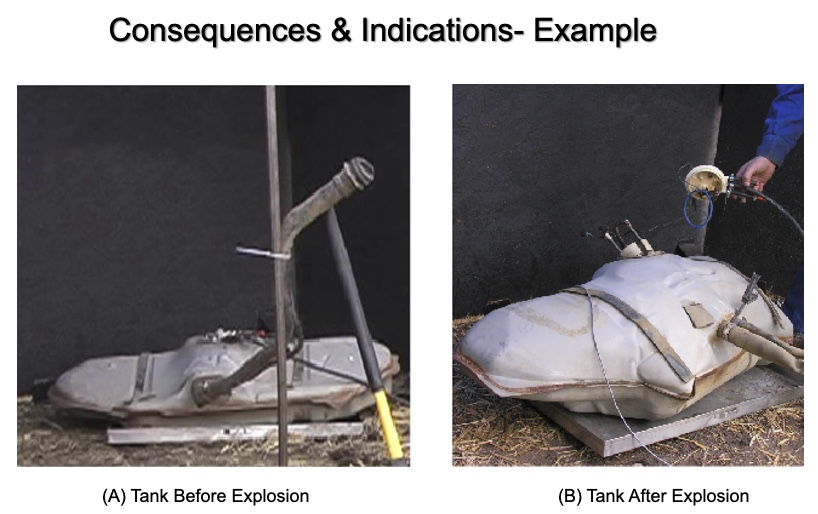
Picture from UT-007 Update Class
What is the EVAP System:
The gas tank's shape and size are decided by thinking about the room available, where you put the gas in, how much space the fuel needs to expand, and how the fuel moves around (which we call "sloshing"). In some newer cars, especially hybrids, they use something called a "fuel tank bladder" to stop extra gas fumes from getting out when you park the car or fill it up with gas.
Liquid Vapor Separator
Have A Great Story About This Topic?
Explain the purpose of the Fuel Separator in the fuel Evaporation System.
Purpose of a Liquid-Vapor Separator:
A liquid-vapor separator is for the liquids and gases. Its main job is to keep them separated and make sure only the right stuff goes where it's supposed to.
What is the EVAP System
How it Works:
Imagine you have a mix of liquid and gas, like water and air. The separator's job is to say, "Liquid, you go this way, and gas, you go that way!"
- Separation Magic: Inside the separator, there are special tricks at work. It slows things down and lets the heavy liquid drop to the bottom while allowing the lighter gas to rise to the top.
- Liquid Exit: The liquid part gets a special door or path to exit from the bottom of the separator. It goes to where it's needed, like an engine or a tank.
- Gas Escape: The gas part also gets its own way out from the top of the separator. It can go where it should, like being released safely or used for other important jobs.
In simple words, the liquid-vapor separator is like a traffic cop, making sure the liquid and gas go their separate ways, so everything works smoothly and safely in machines and systems.
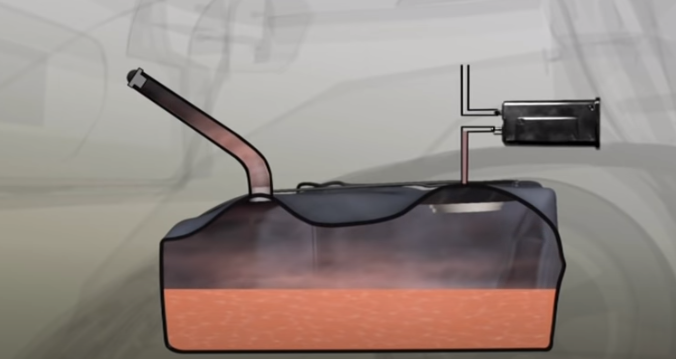
Fuel Filler Cap
What is the EVAP System
Fuel Filler Cap - Your Car's Special Lid!
You know how you have a lid on your juice or soda to keep it fresh? Well, your car has something similar for its gas tank, and it's called a "fuel filler cap." Let's see how it works and why it's important.
What's a Fuel Filler Cap?
Think of it like a lid for your car's gas tank. Its job is to keep the gas inside safe and sound, just like your juice lid keeps your drink from spilling.
How It Works:
- Keeping Gas In: When you put the fuel filler cap on your car's gas tank, it seals it up tight. This means no gas can escape or evaporate into the air when you're not using the car.
- Vacuum Relief Valve: Now, here's where the cool part comes in. Sometimes, weird things can happen, like the air inside the tank shrinking and creating a vacuum. Imagine trying to suck up a milkshake with a super strong straw – it can be tough!
- Air to the Rescue: The fuel filler cap is smart. It has a special "vacuum relief valve." When it senses that the vacuum inside the tank is getting too strong, it lets a little bit of air sneak in. It's like giving your milkshake a tiny hole to breathe through the straw. This prevents the gas tank from getting squished or deformed.
So, the fuel filler cap is like a guardian for your car's gas, making sure it stays put and that the gas tank doesn't get all squishy if something weird happens inside. It's a small but super important part of your car!
Purge Solenoid
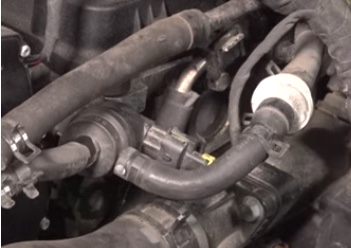
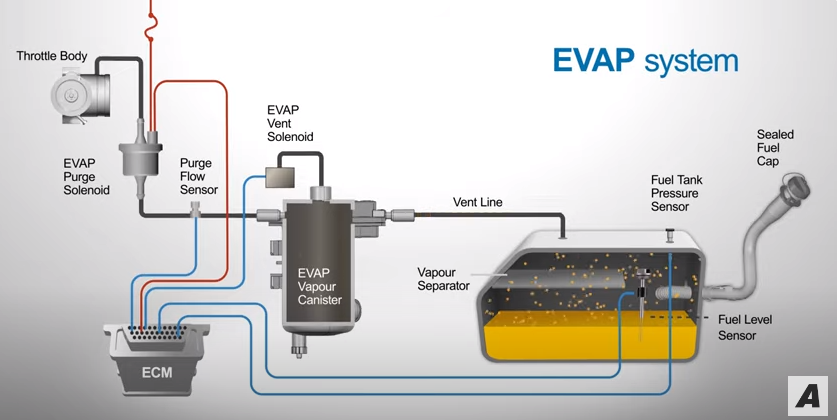
What is the EVAP System:
Imagine you have a special helper in your car's EVAP system, and it's called the "purge solenoid." Let's break down what it does, where it's found, and how it works.
Purpose:
The purge solenoid has a super important job: it helps keep the air clean by managing gasoline vapors in your car. When your car's engine runs, it creates gasoline vapors, and the purge solenoid makes sure these vapors don't escape into the air. Instead, it sends them back to the engine to be used up. This helps the environment stay cleaner and safer.
Location:
You can find the purge solenoid in a special spot, right between the intake manifold and the canister. Think of the intake manifold like a highway for air that leads to the engine, and the canister as a storage place for those tricky gasoline vapors. The purge solenoid is like a traffic cop sitting in the middle, deciding when the vapors can go back to the engine.
Electronically Controlled:
The purge solenoid is a smart little device. It's controlled by electronics, kind of like a remote control for your TV. When it's time to send those vapors back to the engine, the electronics tell the solenoid to open up. This allows the vapors to flow through and get used up in the engine.
Normal Operation:
The purge solenoid usually stays closed, like a door that's shut tight, to keep the vapors trapped in the canister. But it doesn't stay closed all the time. Instead, it operates on a "duty cycle." This means it opens and closes in a pattern, like flickering a light switch on and off. When it's open, the vapors can go back to the engine and be burned up. When it's closed, it keeps the vapors safely stored away.
So, the purge solenoid is like a guardian for your car's air quality, making sure gasoline vapors go where they should and don't escape into the environment. It's a little electronic hero in your car's EVAP system!
SUMMARIZE
What is the EVAP System
Purge Solenoid in the EVAP System:
- Purpose: Helps prevent gasoline vapors from escaping into the air, keeping the environment clean.
- Location: Positioned between the intake manifold (air highway to the engine) and the canister (where vapors are stored).
- Electronically Controlled: Operated by electronics to open and close as needed.
- Normal Operation: Typically closed to keep vapors in the canister but opens and closes in a pattern (duty cycle) when it's time to send vapors back to the engine for burning.
Vent Solenoid
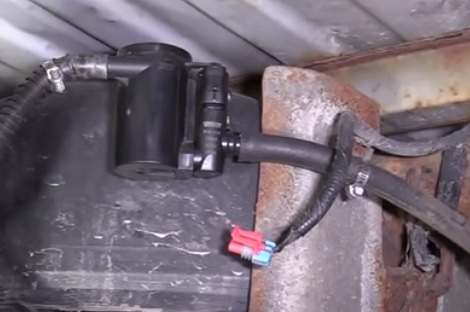
Let's dive into the role of the "vent solenoid" in your car's EVAP system. We'll explore what it does, where you can find it, and how it operates.
Purpose:
The vent solenoid has a crucial job: it helps maintain the right balance of air in your car's EVAP system. It does this by letting fresh air in and out when needed. This balance is important to prevent things like excessive vacuum or pressure, which could harm the system.
Location:
You can spot the vent solenoid between the air inlet and the charcoal canister. The air inlet is like the gateway for fresh air, and the charcoal canister is where gasoline vapors are stored. The vent solenoid sits in between, like a gatekeeper controlling when air can enter or exit.
Electronically Controlled:
Just like the purge solenoid, the vent solenoid is electronic-savvy. It's controlled by electronic signals, acting a bit like a traffic light that changes according to the situation. When the system needs more air or needs to release excess pressure, the electronics signal the vent solenoid to open.
Normal Operation:
Unlike the purge solenoid, which normally stays closed, the vent solenoid is typically open. It's like having a door that's usually ajar. This means it allows fresh air to flow freely into the EVAP system when needed. However, it can close if the system detects that too much air is getting in.
In a nutshell, the vent solenoid acts as the air manager for your car's EVAP system. It ensures the right amount of air is there to keep everything in balance, preventing harmful pressures or vacuums. It's electronically controlled and usually open to let the air flow and closes during leak detection testing.
SUMMARIZE
What is the EVAP System:
Vent Solenoid in the EVAP System:
- Purpose: Maintains the proper air balance in the EVAP system to prevent excessive pressure or vacuum.
- Location: Positioned between the air inlet (where fresh air enters) and the charcoal canister (where gasoline vapors are stored). Sometimes found on the air cleaner housing.
- Electronically Controlled: Operated by electronic signals to open or close as needed.
- Normal Operation: Typically remains open to allow fresh air to flow but can close when necessary to control air intake.
Honda Bypass
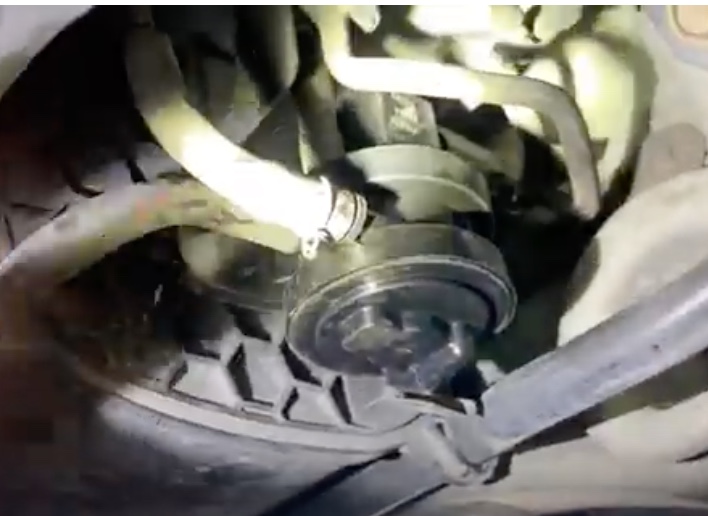
DTC: P0457
Honda Bypass Solenoid in the Evaporative System
What is the EVAP System:
Honda Bypass Solenoid in the Evaporative System - A Key Player in Keeping Air Clean!
Let's explore the Honda Bypass Solenoid's role in the Evaporative System, how it works, and why it matters for clean air in your car.
Purpose:
The Honda Bypass Solenoid is like a gatekeeper in your car's Evaporative System. Its job is to control the flow of gasoline vapors, making sure they go where they should and don't escape into the air.
How It Works:
- Opening and Closing: Just like a gate, the solenoid can open and close. When it's open, it allows gasoline vapors to flow. When it's closed, it blocks the vapors from escaping.
- Sensing Vapors: There are clever sensors that detect when there are too many gasoline vapors. If there are too many, the solenoid says, "Close the gate to trap those vapors!"
- Clean Air Mission: By opening and closing, the solenoid helps keep the air clean. It sends the trapped gasoline vapors back to the engi
Summary
- Purpose: Controls the flow of gasoline vapors in the Evaporative System to keep the air clean.
- Operation: Opens and closes like a gate based on sensors that detect vapors.
- Clean Air Mission: Ensures gasoline vapors are sent back to the engine, preventing them from escaping into the environment.
Fuel Tank Pressure Sensor
What is the EVAP System:
Fuel Tank Pressure Sensor - A Pressure Detective for the Evaporative System!
Let's uncover the secrets of the Fuel Tank Pressure Sensor in the Evaporative System, how it operates, and why it's essential for your car.
How It Works:
- Differential Pressure Sensor: Imagine the sensor as a detective that can sense pressure changes. It's a bit like having two tiny rooms inside it. One room is connected to the fuel tank, and the other room is sealed off from the outside air.
- Using 5 Volts Reference: The sensor gets power from the car's electrical system, which sends it 5 volts of electricity. Think of it as giving the sensor some energy to do its job.
- Typical Reading at Atmospheric Pressure: Normally, when there's no extra pressure in the fuel tank (like when you're driving around), the sensor reads around 2.5 volts. This is like its "neutral" setting when everything is calm or the gas cap is off.
Detective Work:
Now, here's where it gets interesting:
- When the fuel tank pressure changes, like when you fill up with gas or drive up a steep hill, the sensor detects this change.
- It's like the sensor's two rooms feeling the difference in pressure between the fuel tank and the sealed room. It can sense if there's too much or too little pressure.
- If there's too much pressure, it sends a signal to the car's computer to do something about it, like opening the vent solenoid to let air in and balance the pressure.
- If there's too little pressure, it tells the computer that something might be wrong with the Evaporative System.
Summary
- Type: The Fuel Tank Pressure Sensor is a differential pressure sensor, meaning it measures the difference in pressure between two spaces.
- Voltage: It operates using a 5-volt reference, like giving it power.
- Atmospheric Pressure: Its typical reading at normal, atmospheric pressure is around 2.5 volts.
So, the Fuel Tank Pressure Sensor or differential pressure sensor is like a pressure detective, always keeping an eye on the fuel tank's pressure and helping your car's computer make sure everything's running smoothly in the Evaporative System.
Two Way Valve in the EVAP System
What is the EVAP System:
A mechanical valve employed by Honda and various other automakers to uphold a set pressure or vacuum level within the fuel tank. This valve safeguards the fuel tank from potential harm due to excessive pressure or vacuum situations.
Fuel Temperature Sensor - A Smart Helper for Nissan Vehicles!
Let's discover how a Fuel Temperature Sensor works, what it does, and how Nissan vehicles use it to their advantage.
How It Works:
- Temperature Detective: The Fuel Temperature Sensor is like a little detective inside your car's fuel system. It can sense how hot or cold the fuel is.
- Resistance Changes: When the fuel gets warmer, the sensor's resistance changes. Think of it like a thermometer that tells you the temperature by moving a needle.
- Sending Signals: As the sensor detects changes in fuel temperature, it sends signals to the car's computer. These signals help the computer adjust things like the fuel mixture to make sure the engine runs smoothly.
Purpose:
- Efficiency Expert: The Fuel Temperature Sensor's main job is to help the engine run efficiently. By knowing the fuel's temperature, it helps the car use just the right amount of fuel for the conditions, whether it's hot or cold outside.
- Nissan's Use: Smart Engines: Nissan vehicles use the Fuel Temperature Sensor to make their engines even smarter. It helps them optimize fuel usage and reduce emissions, making the car kinder to the environment.
- EVAP Monitor: Nissan systems rely on the fuel temperature sensor to run the EVAP monitor
Summary
- Function: Detects fuel temperature changes and sends signals to the car's computer.
- Purpose: Helps the engine run efficiently by adjusting fuel mixture.
- Nissan's Use: Nissan vehicles use this sensor to make their engines smarter and more environmentally friendly.
- EVAP Monitor: Nissan systems rely on the fuel temperature sensor to run the EVAP monitor
EVAP System Leak Detection Pump - The Leak Detective!
What is the EVAP System:
Imagine the EVAP system leak detection pump as a pressure or vacuum tester: finding leaks in your car's fuel system. Let's explore how it works and the method it uses to detect those sneaky leaks.
How It Works:
- Pump Power: The leak detection pump is like a vacuum cleaner for your car's EVAP system. It uses a pump to create suction.
- Sealing the System: First, it closes off the EVAP system to make sure nothing can go in or out while it's doing its detective work.
- Creating a Vacuum: Next, it starts the pump, which sucks the air out of the EVAP system. This makes it a bit like a vacuum-sealed bag.
- Monitoring Pressure: Once the system is sealed and the air is sucked out, it keeps an eye on the pressure inside. Normally, there shouldn't be any leaks, so the pressure should stay stable.
- Detecting Changes: If there's a leak anywhere in the system, even a tiny one, the pressure will start to drop because air is escaping. The leak detection pump is super sensitive and notices this drop.
- Alerting the Computer: When it detects a pressure drop, the pump sends a signal to the car's computer, saying, "Hey, there's a leak somewhere!"
Method to Detect Leaks:
- The leak detection pump uses the "pressure change method" to find leaks. It compares the pressure inside the sealed EVAP system before and after the pump starts sucking air out. If the pressure drops, it means there's a leak, and the pump alerts the car's computer.
So, the EVAP system leak detection pump is like a vigilant detective that uses changes in pressure to catch any leaks in your car's fuel system, helping keep the environment clean and your car running smoothly.
EVAP System Leak Detection Pump:
- Function: Detects leaks in the car's EVAP system.
- Operation: Creates a vacuum, seals the system, and monitors pressure changes.
- Detection Method: Uses the "pressure change method" by comparing pressure before and after creating a vacuum to identify leaks.
EVAP Service Port - A Helpful Connection Point
What is the EVAP System:
The EVAP service port is like a special door on some vehicles that makes it easier to work on the Evaporative Emission Control System. Here's how it works and why it's not found on all cars.
How It Works:
- Access Point: Think of the EVAP service port as a secret door to the EVAP system. It's a place where mechanics can connect their tools to service or test the system.
- Connection: Mechanics can attach special equipment to the port, like a smoke machine or a pressure gauge. This helps them find and fix issues in the EVAP system.
Not Required on All Vehicles:
- Variation: Not all cars have an EVAP service port. It depends on the car's design and the manufacturer's choice.
- Simpler Systems: Some vehicles have simpler EVAP systems that don't need a service port because they're easier to access and work on without it.
Summary
Summary:
- Function: Provides a connection point for mechanics to service and test the EVAP system.
- Variation: Not all vehicles have an EVAP service port; it depends on the car's design and complexity of the EVAP system.
SMOG UPDATE ONLINE CLASS Power Point Presentation
CLICK HERE FOR ACCESS
How does EVAP Decay System Work
CLASS SCHEDULES
Emission Control 1:
B.A.R. Smog Check
Inspector Level 1
(Inspector "Smog" License):
Engine Fundamentals
8am - 12:15 pm
Summer Class
7/5/2022 -8/5/2022
Class # 799065
Emission Control 2:
B.A.R. Smog Check
Inspector Level 2
(Inspector "Smog" License):
Rules and Regulations
8am - 12:15 pm
Summer Classes
7/5/2022 - 8/5/2022
Class # 799067
Engine Performance 1:
8am - 12: 15 pm
Date: TBD
Class # 799069
Engine Performance 2:
B.A.R. Specified Diagnostic
and Repair Training
(Repair "Smog" License)
Time: TBD
Date: TBD
Class # 799071
Emission Control 1
(Inspector "Smog" License):
5:00pm - 8:45 pm
Date: TBD
Class # 799065
Emission Control 2:
(Inspector "Smog" License):
5:00pm - 8:45 pm
Date: TBD
Class # 799065
Exhaust Emissions (Update Class):
5:30 pm - 8:45 pm
Tuesday nights:
Dates: coming soon
Class # 796070